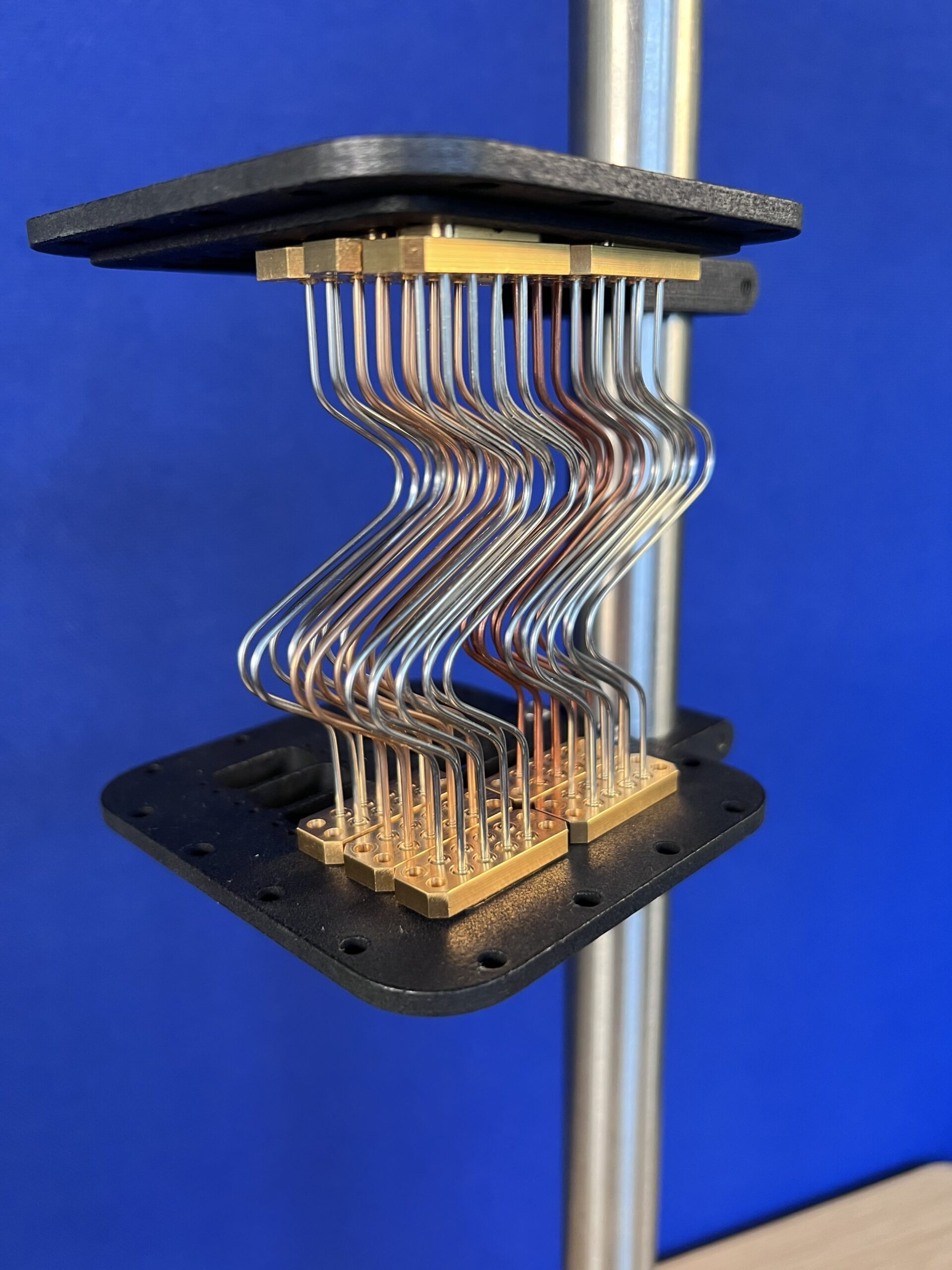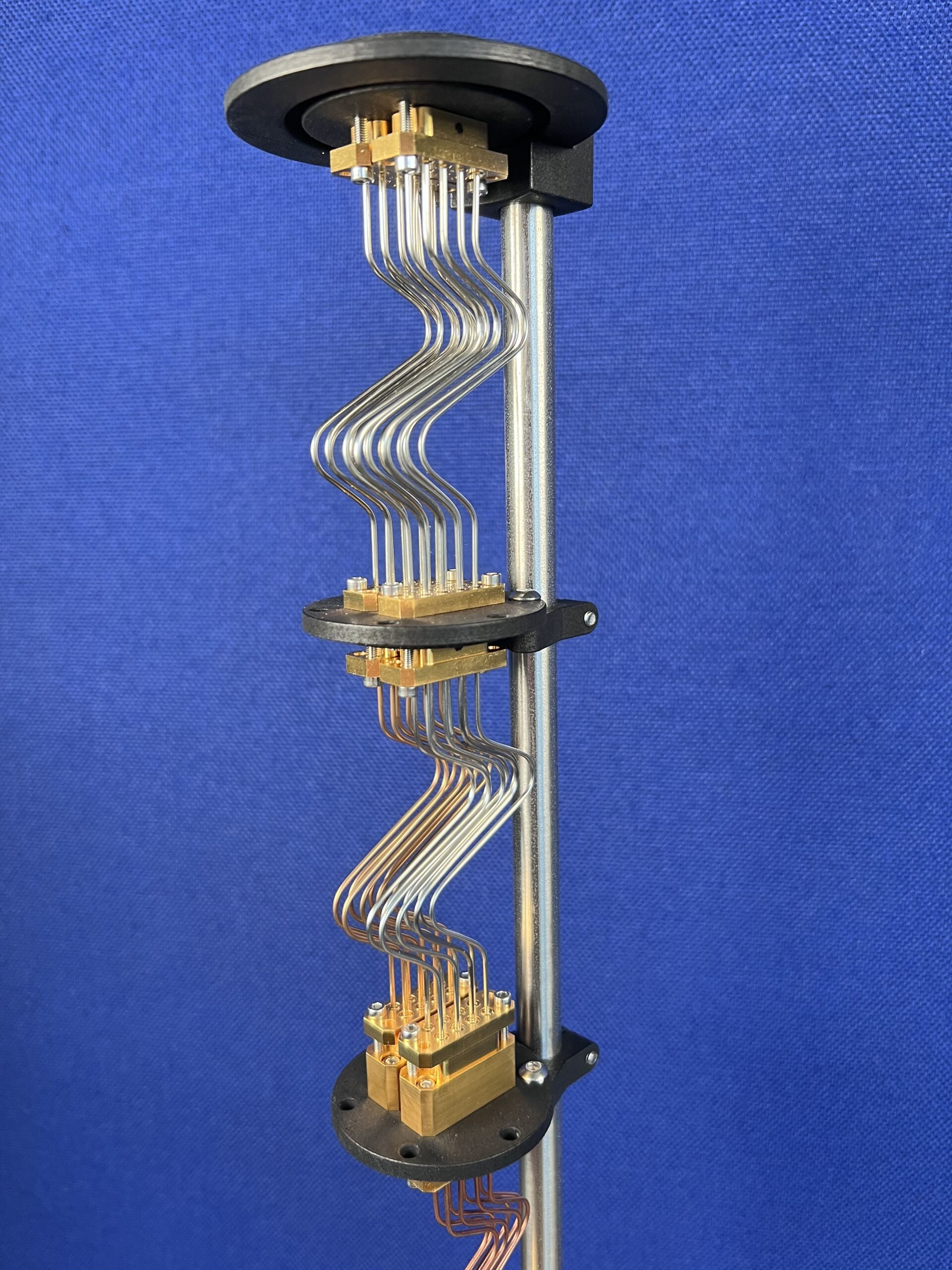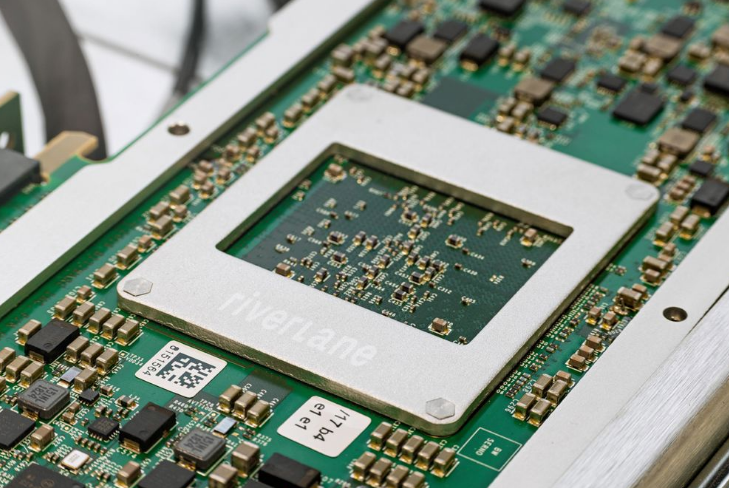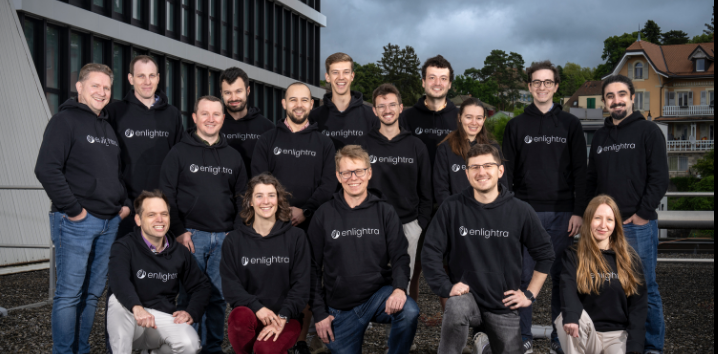
With the increasing interest in quantum computing and the development of large-scale high qubit machines there’s a requirement for an increasing number of microwave cables necessary for control and readout lines to the quantum processor. These have traditionally been provided by individual coaxial cables fitted with SMA connectors which offer limited packaging due to their 8mm hex coupling nut which also requires space for the application of tooling during installation.
CryoCoax, a division of Intelliconnect, have developed high-density multiway connectors based around the SMPM interface which not only allow many more coaxial lines in a given space but also simplify the installation and customisation within a dilution refrigerator. Typical spacing using SMA connectors is limited to approximately 16mm, whereas these high-density connectors are designed with a pitch of 4.75mm. The SMPM interface provides a simple push to mate connection only requiring a hex key to tighten the two fasteners.
Quantum processors are required to operate at temperatures near absolute zero, this can be achieved using a dilution refrigerator (DR). A typical dilution refrigerator has a vacuum sealed top plate and a number of cooling stages below this, reaching temperatures below 20mK at the lowest stage. Each cooling stage is separated by a bulkhead/heatshield to minimise heat transfer. The cables are installed between each of these stages and connect via feedthrough connectors and must provide good thermalisation. Thorough thermalization of cables, attenuators, and microwave components at the various temperature stages is not only important for reducing the heat load on the dilution refrigerator, but also for reducing thermal noise within the system.
Glass hermitic seals provide the vacuum tight seal at the top of the DR with hermeticity of 1×10^(−8) CC He/Sec at 1 Atm. These can be incorporated into custom designed top plates as well as standard ISO or KF style plates. A typical ISO 100 plate can support up to 120 coax lines depending on connector configuration. Custom plates are capable of supporting many more coax lines.

Standard non-hermetic feedthrough plates are required between the various cooling stages, and these are simply machined with mounting holes to accept the connectors. The connector body incorporates a flange which tightens against the top or bottom face of the plate to provide thermalisation and to close off any radiation path. CryoCoax can supply top to bottom assemblies ‘coax sticks’ which can be fully customised with attenuator blocks and a full complement of cable types and materials to provide connections from room temperature, through all of the cooling stages down to low temperature level. These undergo RF testing at room temperature, test data can be provided for DC Resistance, Return Loss, Insertion Loss up to 40GHz, most applications operate at frequencies much lower than this.
The connector components are machined from high purity copper and beryllium copper and are gold plated to provide best thermal conductivity. Non-magnetic versions can also be specified if required. The connectors are compatible with .047” (1.19mm) size coax, either semi-rigid, flexible or conformable versions are available. Semi-rigid cables are available in Niobium Titanium, Stainless Steel, Copper, Cupronickel and Beryllium Copper as well as combinations of these with silver plated conductors, providing the user with a large choice in terms of thermal conductivity and attenuation. To minimise passive heat load, cable materials with low thermal conductivity are normally favoured, however, with the exception of superconductors this typically goes hand in hand with poor electrical conductivity. Flexible cables having silver plated copper conductors are typically used for connections from the top of the DR to connect the control electronics at room temperature and can be terminated with conventional SMA connectors. Conformable copper coax options are also available and are often used at the lowest stage.

Superconducting Niobium-Titanium cables are often specified in quantum applications, this material can be challenging, if not impossible to solder. To overcome this, CryoCoax developed solderless connections for these high-density connectors as well as the traditional SMA, 2.92 & SMP connectors.
Standard configurations are 8-way, 16-way and 24-way with either smooth bore or full detent options, connector blocks can be ganged together to potentially give hundreds of coax lines in a DR. Two connector blocks form a mated pair, one having a full detent male SMPM interface, and the other a smooth bore SMPM male interface, these are used in conjunction with ‘bullet’ style female to female SMPM adaptors fitted between a pair of connector blocks. The ‘bullet’ adaptors are retained in the full detent connector block. These can be combined with 8-way, 16-way and 24-way attenuator blocks available in 0dB, 3dB, 6dB, 10dB and 20dB. Intelliconnect worked with a leading attenuator manufacturer in developing these attenuator blocks to compliment the high-density connectors. Attenuators are employed to suppress thermal noise and provide thermalisation of the centre conductors.
With assistance from NPL (National Physical Laboratory) we were able to prove the low temperature reliability of the design over a number of thermal cycles, this was followed by in-house durability testing to confirm that the RF performance and DC resistance remained stable after multiple mating cycles.
For more market insights, check out our latest quantum computing news here.

















